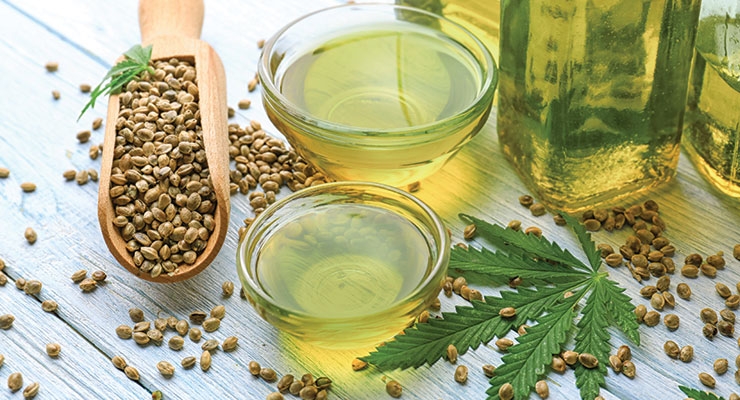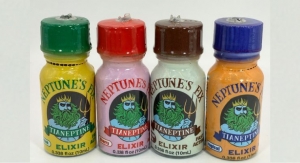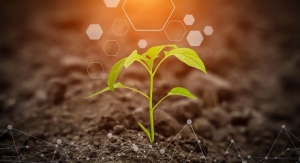By Gene Bruno and Anthony Zolezzi, Twinlab03.01.19
The buzz surrounding CBD, phytocannabinoids, and hemp is truly extensive.
Companies selling these products, websites discussing their use, regulatory agencies, experts, and even people lacking credible expertise all have opinions and are sharing their views on this group
of nutraceuticals.
The result is an interesting mix of myths and science. The purpose of this article is to help provide clarity on several important issues.
Myth: CBD and phytocannabinoids are the same thing.
Science: A naturally-occurring compound found in plants, cannabidiol (CBD) belongs to a family of compounds called cannabinoids or, more specifically, phytocannabinoids—which means cannabinoids from plants (phyto = plant). Actually, there are more than 100 different phytocannabinoids. So, CBD is a phytocannabinoid, but all phytocannabinoids are not CBD. Other phytocannabinoids include CBG, CBC, N-palmitylethanolamide (PEA), N-oleoylethanolamide (SEA), cis-9-octadecenoamide (OEA), and beta-caryophyllene—to name a few.
Myth: Hemp is the only source of phytocannabinoids.
Science: Hemp is certainly a primary source of phytocannabinoids, including CBD. It is not, however, the exclusive source. The fact is, human beings have evolved on a diet that includes various phytocannabinoid-containing foods. For example, grapes, broccoli, cabbage, carrots, parsley, sunflower seeds, and peas all contain phytocannabinoids—so does cacoa (from which chocolate is derived) and tea.1-3 Likewise, culinary herbs like basil, cinnamon, black pepper, cloves, oregano, and rosemary all contain phytocannabinoids, as do medicinal herbs like Echinacea, turmeric, and licorice.4-6 These examples only constitute a partial list of phytocannabinoid-containing plants.
Myth: The endocannabinoid system is only a minor system in the body.
Science: The endocannabinoid system (eCS) is a critical system of vast importance to the body. It is composed of a series of receptors, which occur throughout the body, including the brain, other organs, connective tissues, glands, and immune cells. The eCS performs many different tasks and helps maintain a stable internal environment despite fluctuations in the external environment, aka homeostasis, affecting many important functions, including how a person feels, moves, and reacts. In fact, the eCS is involved in regulating a variety of physiological and cognitive processes including fertility, pregnancy, during pre- and postnatal development, appetite, pain-sensation, mood, and memory.7-11
One researcher summarized the eCS in this way: “Metaphorically, the eCS system represents a microcosm of psychoneuroimmunology or mind-body medicine.”12 I think we can all agree, the eCS is hardly a minor body system.
Myth: If you take CBD/phytocannabinoids, it will cause your body to make less of its own endocannabinoids—just like getting testosterone injections will cause your body to make less of its own testosterone.
Science: This is not true, nor is it a reasonable comparison. Unlike the testosterone from injections, which are essentially the same chemical structure as that of your body’s own testosterone, phytocannabinoids are not the same chemical structure as the endocannabinoids that your body produces. Here’s how it works.
The two prominent endocannabinoids that your body produces are N-arachidonylethanolamide (AEA) and sn-2-arachidonoylglycerol (2-AG). These endocannabinoids bind with receptors within the eCS. Despite the fact that AEA and 2-AG have valuable effects, there is an enzyme in the body called fatty acid amide hydrolase (FAAH), which breaks down these endocannabinoids. Once broken down, there are fewer endocannabinoids present to do their job. This, combined with other factors, can result in suboptimal functioning of the eCS, also known as “eCS deficiency syndrome”—which may be implicated in migraine, fibromyalgia, irritable bowel syndrome, psychological disorders, and other conditions.13 That’s where phytocannabinoids can help.
When significant amounts of phytocannabinoids, such as CBD, are consumed, the FAAH will be used to break them down, instead of breaking down the endocannabinoids. This helps maintain healthy levels of endocannabinoids and prolong their action.14
A range of phytocannabinoids have value as entourage compounds in enhancing the effects of endocannabinoids by inhibiting their hydrolysis via substrate competition and prolonging their action. So the use of phytocannabinoids does not cause your body to make less of its own endocannabinoids—quite the opposite.
Myth: This bottle of hemp oil contains 3,000 mg of CBD per serving.
Science: There is a great deal of “smoke and mirrors” with the labeling of CBD products regarding the amount of CBD found in a single dose. Recently, I was visiting a friend with stage 4 cancer. He proudly showed me a bottle of hemp oil he was using as part of his treatment protocol, which on the front of the label, indicated that it provided 3,000 mg of CBD. The way the information was presented led the consumer into thinking that it provided 3,000 mg of CBD per serving. After carefully examining the supplement fact box and calculating the numbers, I informed him that he actually was receiving 10 mg of CBD per dropperful. Caveat emptor (buyer beware).
A product that contained 3,000 mg of CBD per serving would probably cost several hundred dollars per bottle (or more). When purchasing a CBD/phytocannabinoids product, the label should clearly state the exact amount of CBD or phytocannabinoids provided
per serving.
Myth: CBD isolate is just as good as full-spectrum phytocannabinoids.
Science: As stated previously, CBD is one of many phytocannabinoids found in hemp. Although it is the most prevalent phytocannabinoid, consumption of the others, alongside CBD, results in “the entourage effect”—greater overall synergistic activity with greater results. Specifically, full-spectrum phytocannabinoids will result in the activation of the two major eCS receptors, not just one of them—as is the case with just CBD isolate. There is no entourage effect if you’re just using isolated CBD. Full-spectrum hemp extract, conversely, provides a full spectrum of naturally-occurring phytocannabinoids, including a defined amount of CBD. Although CBD isolate is less expensive, it is also less effective. Full-spectrum phytocannabinoids are the right way to go.
Conclusion
Many myths exist surrounding CBD, phytocannabinoids, and hemp. Hopefully, this article has helped shine a scientific light on some of these issues, providing a greater understanding about the difference between CBD and phytocannabinoids, sources of phytocannabinoids, the endocannabinoid system, the body’s response to phytocannabinoids, dosage labeling regarding CBD, and the difference between CBD isolate and full-spectrum phytocannabinoids.
Companies can recommend “The Science of CBD” video podcast to customers to learn more from Gene Bruno about proper use of hemp, CBD, and phytocannabinoids. To view or subscribe go to: www.twinlabcbd.com.
About the authors: Gene Bruno, MS, MHS, is professor of nutraceutical science for Huntington University of Health Sciences and serves as senior director of product innovation for Twinlab Consolidation Corp. As a 40-year veteran of the dietary supplement industry, he has developed natural products for dozens of dietary supplement companies; educated and trained natural product retailers and healthcare professionals; and written articles, books, and textbook chapters on nutrition, herbal medicine, nutraceuticals, and integrative health issues.
Anthony Zolezzi is CEO of Twinlab Consolidated Holdings. He has played a major role for the past 30 years in leading and advising corporations to innovate within their existing strengths, while increasing profitability and uncovering new innovations. His work has resulted in numerous successful entrepreneurial movements, companies, and products focused on sustainability and health. He is author of numerous books including, “Uncharted Waters,” “Do Something: Leave Your Mark on the World,” “The Detachment Paradox” and “Chemical-Free Kids: How to Safeguard Your Child’s Diet and Environment.”
References
Companies selling these products, websites discussing their use, regulatory agencies, experts, and even people lacking credible expertise all have opinions and are sharing their views on this group
of nutraceuticals.
The result is an interesting mix of myths and science. The purpose of this article is to help provide clarity on several important issues.
Myth: CBD and phytocannabinoids are the same thing.
Science: A naturally-occurring compound found in plants, cannabidiol (CBD) belongs to a family of compounds called cannabinoids or, more specifically, phytocannabinoids—which means cannabinoids from plants (phyto = plant). Actually, there are more than 100 different phytocannabinoids. So, CBD is a phytocannabinoid, but all phytocannabinoids are not CBD. Other phytocannabinoids include CBG, CBC, N-palmitylethanolamide (PEA), N-oleoylethanolamide (SEA), cis-9-octadecenoamide (OEA), and beta-caryophyllene—to name a few.
Myth: Hemp is the only source of phytocannabinoids.
Science: Hemp is certainly a primary source of phytocannabinoids, including CBD. It is not, however, the exclusive source. The fact is, human beings have evolved on a diet that includes various phytocannabinoid-containing foods. For example, grapes, broccoli, cabbage, carrots, parsley, sunflower seeds, and peas all contain phytocannabinoids—so does cacoa (from which chocolate is derived) and tea.1-3 Likewise, culinary herbs like basil, cinnamon, black pepper, cloves, oregano, and rosemary all contain phytocannabinoids, as do medicinal herbs like Echinacea, turmeric, and licorice.4-6 These examples only constitute a partial list of phytocannabinoid-containing plants.
Myth: The endocannabinoid system is only a minor system in the body.
Science: The endocannabinoid system (eCS) is a critical system of vast importance to the body. It is composed of a series of receptors, which occur throughout the body, including the brain, other organs, connective tissues, glands, and immune cells. The eCS performs many different tasks and helps maintain a stable internal environment despite fluctuations in the external environment, aka homeostasis, affecting many important functions, including how a person feels, moves, and reacts. In fact, the eCS is involved in regulating a variety of physiological and cognitive processes including fertility, pregnancy, during pre- and postnatal development, appetite, pain-sensation, mood, and memory.7-11
One researcher summarized the eCS in this way: “Metaphorically, the eCS system represents a microcosm of psychoneuroimmunology or mind-body medicine.”12 I think we can all agree, the eCS is hardly a minor body system.
Myth: If you take CBD/phytocannabinoids, it will cause your body to make less of its own endocannabinoids—just like getting testosterone injections will cause your body to make less of its own testosterone.
Science: This is not true, nor is it a reasonable comparison. Unlike the testosterone from injections, which are essentially the same chemical structure as that of your body’s own testosterone, phytocannabinoids are not the same chemical structure as the endocannabinoids that your body produces. Here’s how it works.
The two prominent endocannabinoids that your body produces are N-arachidonylethanolamide (AEA) and sn-2-arachidonoylglycerol (2-AG). These endocannabinoids bind with receptors within the eCS. Despite the fact that AEA and 2-AG have valuable effects, there is an enzyme in the body called fatty acid amide hydrolase (FAAH), which breaks down these endocannabinoids. Once broken down, there are fewer endocannabinoids present to do their job. This, combined with other factors, can result in suboptimal functioning of the eCS, also known as “eCS deficiency syndrome”—which may be implicated in migraine, fibromyalgia, irritable bowel syndrome, psychological disorders, and other conditions.13 That’s where phytocannabinoids can help.
When significant amounts of phytocannabinoids, such as CBD, are consumed, the FAAH will be used to break them down, instead of breaking down the endocannabinoids. This helps maintain healthy levels of endocannabinoids and prolong their action.14
A range of phytocannabinoids have value as entourage compounds in enhancing the effects of endocannabinoids by inhibiting their hydrolysis via substrate competition and prolonging their action. So the use of phytocannabinoids does not cause your body to make less of its own endocannabinoids—quite the opposite.
Myth: This bottle of hemp oil contains 3,000 mg of CBD per serving.
Science: There is a great deal of “smoke and mirrors” with the labeling of CBD products regarding the amount of CBD found in a single dose. Recently, I was visiting a friend with stage 4 cancer. He proudly showed me a bottle of hemp oil he was using as part of his treatment protocol, which on the front of the label, indicated that it provided 3,000 mg of CBD. The way the information was presented led the consumer into thinking that it provided 3,000 mg of CBD per serving. After carefully examining the supplement fact box and calculating the numbers, I informed him that he actually was receiving 10 mg of CBD per dropperful. Caveat emptor (buyer beware).
A product that contained 3,000 mg of CBD per serving would probably cost several hundred dollars per bottle (or more). When purchasing a CBD/phytocannabinoids product, the label should clearly state the exact amount of CBD or phytocannabinoids provided
per serving.
Myth: CBD isolate is just as good as full-spectrum phytocannabinoids.
Science: As stated previously, CBD is one of many phytocannabinoids found in hemp. Although it is the most prevalent phytocannabinoid, consumption of the others, alongside CBD, results in “the entourage effect”—greater overall synergistic activity with greater results. Specifically, full-spectrum phytocannabinoids will result in the activation of the two major eCS receptors, not just one of them—as is the case with just CBD isolate. There is no entourage effect if you’re just using isolated CBD. Full-spectrum hemp extract, conversely, provides a full spectrum of naturally-occurring phytocannabinoids, including a defined amount of CBD. Although CBD isolate is less expensive, it is also less effective. Full-spectrum phytocannabinoids are the right way to go.
Conclusion
Many myths exist surrounding CBD, phytocannabinoids, and hemp. Hopefully, this article has helped shine a scientific light on some of these issues, providing a greater understanding about the difference between CBD and phytocannabinoids, sources of phytocannabinoids, the endocannabinoid system, the body’s response to phytocannabinoids, dosage labeling regarding CBD, and the difference between CBD isolate and full-spectrum phytocannabinoids.
Companies can recommend “The Science of CBD” video podcast to customers to learn more from Gene Bruno about proper use of hemp, CBD, and phytocannabinoids. To view or subscribe go to: www.twinlabcbd.com.
About the authors: Gene Bruno, MS, MHS, is professor of nutraceutical science for Huntington University of Health Sciences and serves as senior director of product innovation for Twinlab Consolidation Corp. As a 40-year veteran of the dietary supplement industry, he has developed natural products for dozens of dietary supplement companies; educated and trained natural product retailers and healthcare professionals; and written articles, books, and textbook chapters on nutrition, herbal medicine, nutraceuticals, and integrative health issues.
Anthony Zolezzi is CEO of Twinlab Consolidated Holdings. He has played a major role for the past 30 years in leading and advising corporations to innovate within their existing strengths, while increasing profitability and uncovering new innovations. His work has resulted in numerous successful entrepreneurial movements, companies, and products focused on sustainability and health. He is author of numerous books including, “Uncharted Waters,” “Do Something: Leave Your Mark on the World,” “The Detachment Paradox” and “Chemical-Free Kids: How to Safeguard Your Child’s Diet and Environment.”
References
- Gertsch J, Pertwee RG, Di Marzo V. Phytocannabinoids beyond the Cannabis plant - do they exist? Br J Pharmacol. 2010 Jun;160(3):523-9.
- Hanuš LO, Meyer SM, Muñoz E, Taglialatela-Scafati O, Appendino G. Phytocannabinoids: a unified critical inventory. Nat Prod Rep. 2016 Nov 23;33(12):1357-1392.
- Gertsch J, Pertwee RG, Di Marzo V. Phytocannabinoids beyond the Cannabis plant - do they exist? Br J Pharmacol. 2010 Jun;160(3):523-9.
- Fidyt K, Fiedorowicz A, Strządała L, Szumny A. β-caryophyllene and β-caryophyllene oxide-natural compounds of anticancer and analgesic properties. Cancer Med. 2016 Oct;5(10):3007-3017
- Gertsch J, Pertwee RG, Di Marzo V. Phytocannabinoids beyond the Cannabis plant - do they exist? Br J Pharmacol. 2010 Jun;160(3):523-9.
- Hanuš LO, Meyer SM, Muñoz E, Taglialatela-Scafati O, Appendino G. Phytocannabinoids: a unified critical inventory. Nat Prod Rep. 2016 Nov 23;33(12):1357-1392.
- Klein C, Hill MN, Chang SC, Hillard CJ, Gorzalka BB. Circulating endocannabinoid concentrations and sexual arousal in women. J Sex Med. 2012 Jun;9(6):1588-601.
- Wang H, Xie H, Dey SK. Endocannabinoid signaling directs periimplantation events. AAPS J. 2006;8(2):E425-32.
- Fride E. The endocannabinoid-CB(1) receptor system in pre- and postnatal life. Eur J Pharmacol. 2004 Oct 1;500(1-3):289-97.
- Aizpurua-Olaizola O, Elezgarai I, Rico-Barrio I, Zarandona I, Etxebarria N, Usobiaga A. Targeting the endocannabinoid system: future therapeutic strategies. Drug Discov Today. 2017 Jan;22(1):105-110.
- Donvito G, Nass SR, Wilkerson JL, Curry ZA, Schurman LD, Kinsey SG, Lichtman AH. The Endogenous Cannabinoid System: A Budding Source of Targets for Treating Inflammatory and Neuropathic Pain. Neuropsychopharmacology. 2018 Jan;43(1):52-79.
- McPartland JM, Guy GW, Di Marzo V. Care and feeding of the endocannabinoid system: a systematic review of potential clinical interventions that upregulate the endocannabinoid system. PLoS One. 2014 Mar 12;9(3):e89566.
- Pacher P, Bátkai S, Kunos G. The Endocannabinoid System as an Emerging Target of Pharmacotherapy. Pharmacol Rev. 2006 September; 58(3): 389–462.
- Leweke FM, Piomelli D, Pahlisch F, Muhl D, Gerth CW, Hoyer C, Klosterkötter J, Hellmich M, Koethe D. Cannabidiol enhances anandamide signaling and alleviates psychotic symptoms of schizophrenia. Transl Psychiatry. 2012 Mar 20;2:e94.




























